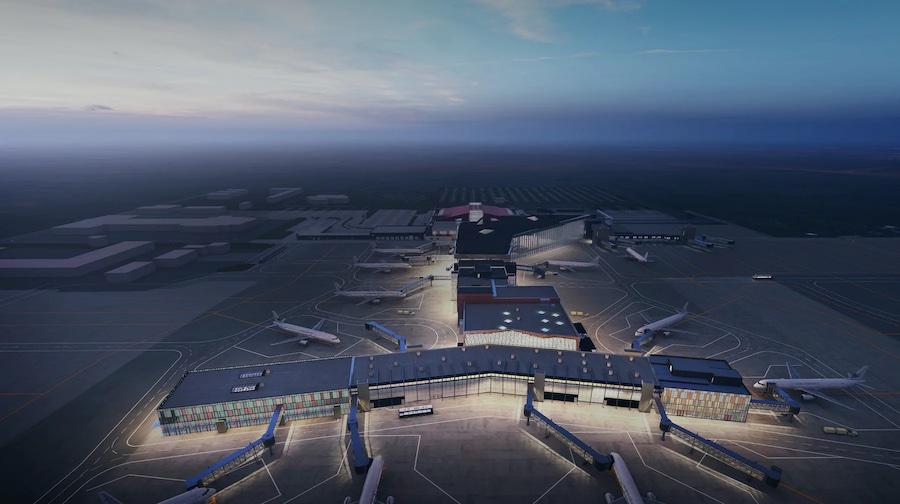Reykjavik Keflavik Airport Eyes Handling 15 Million Annual Passengers By 2045

Iceland’s Reykjavik Keflavik International Airport (KEF) has updated its long-term master plan, which aims to increase the airport’s annual capacity from the 6.1 million passengers handled in 2022 to 15.1 million passengers in 2045.
Isavia, the airport operator, says the airport will be able to handle 12.9 million passengers by 2035 under its current two-runway format. The before-2035-phase of the master plan calls for a terminal expansion.
“The expansion of the terminal aims to make the airport better equipped to perform its role as a connecting station between North America and Europe and to improve the services and experience of passengers,” Isavia says in the updated master plan.
The 2035-2045 phase of the master plan calls for airfield improvements, including construction of a third runway. Isavia says increasing traffic levels will “trigger the need for the third runway” and additional terminal improvements.
The plan calls for the eventual implementation of dual parallel taxiways along the south end of the new third runway, which will “improve taxiway flows on the airfield,” the airport operator says.
Airport development and construction will be done as part of “a flexible, long-term phased development plan based on forecasted passenger numbers and traffic at the airport,” Isavia says.
The airport operator notes the master plan includes building multi-story automobile parking garages and developing “special areas for storage, distribution and production of sustainable energy sources for aircraft.”
Brynjar Vatnsdal, Isavia’s manager of airport planning and development, says: “Because the master plan covers a quarter of a century, it needs to be able to be responsive to evolving needs. It is important to be able to adapt the plan in this way without losing sight of the long-term thinking that it’s based on.”
The plan also covers growing cargo services at KEF, calling for “a new cargo aircraft apron area, cargo facilities, freight forwarding and administrative facilities.”
Brynjar says “one of the keys [of the new cargo area] is the close proximity to the terminal apron, providing operational efficiency for cargo split between dedicated freighters and passenger aircraft, fully utilizing the airport’s route network.”
The master plan will be updated again in five years, he adds. “The master plan is an important document that allows us to keep the airport running efficiently, while also planning for the future,” Brynjar says.
